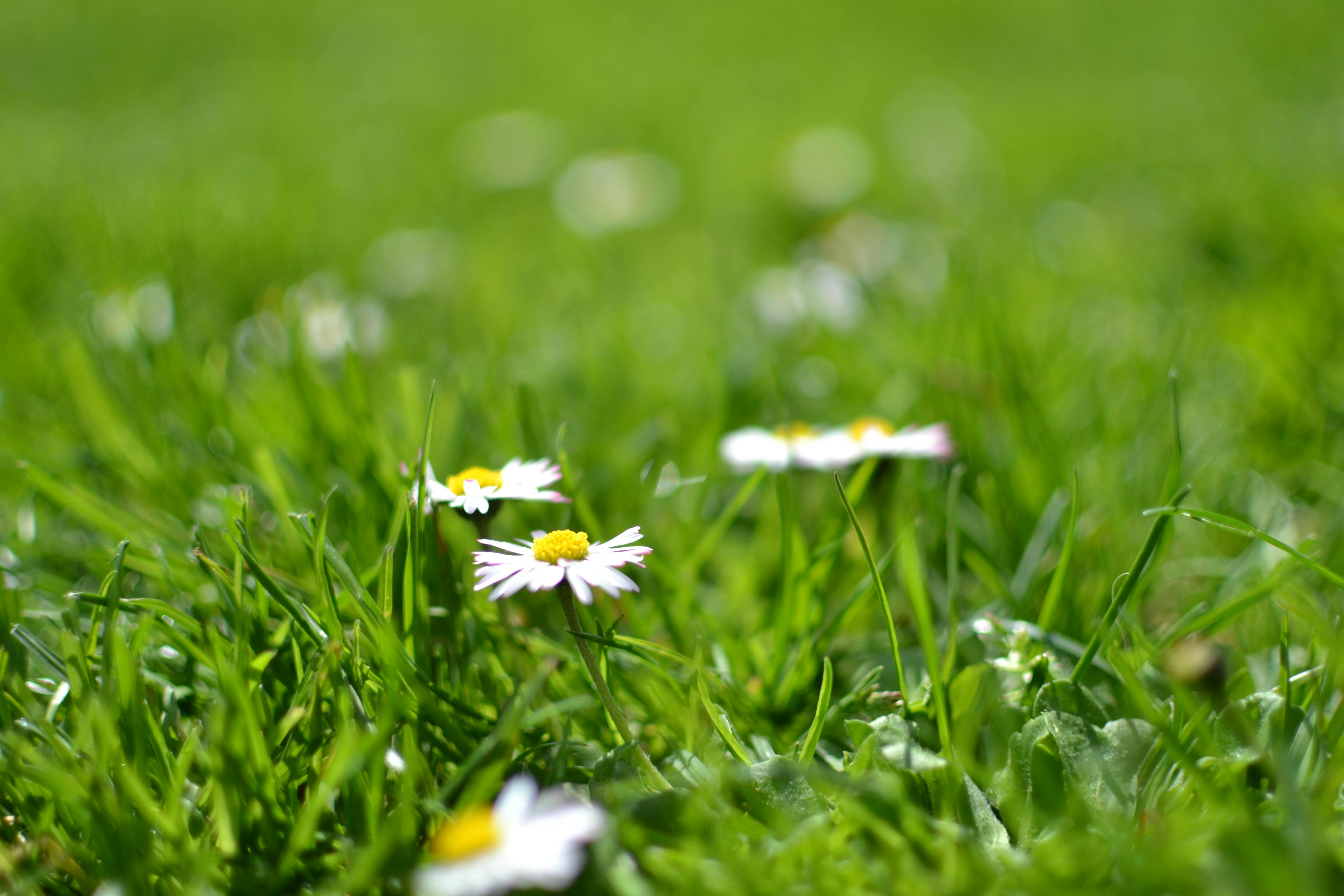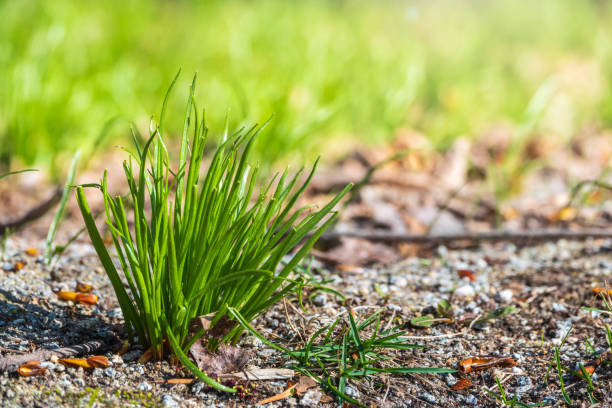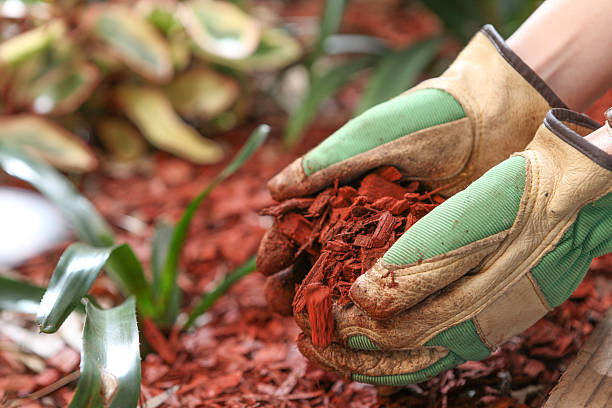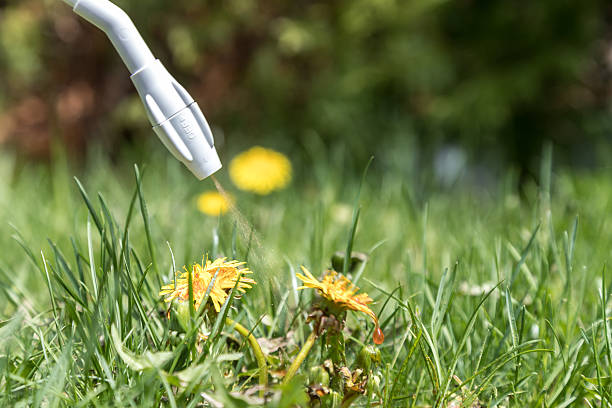Weeds tend to grow where they’re not really wanted, you really can’t take them out of the picture. They grow in farms, gardens, lawns, in natural football pitches and sometimes on top of our houses. Weed if not controlled properly have a whole lot of disadvantages. That’s why we’ll be looking at how to control weed in lawns.
Highlights
- What is a lawn?
- what is weed?
- How to identify weed in lawns.
- How to control weed in lawns.
- How to prevent weed from growing.
- How to apply herbicides.
- The best time to apply herbicides.
- The bottom line.
What is a lawn?

A lawn is an area of soil-covered land planted with grasses and other durable plants such as clover which are maintained at a short height with a lawnmower and used for aesthetic and recreational purposes. A land covered with grass kept closely mowed, esp. in front of or around a house.
Lawns can be found at the back or front of houses, a football field is a good example of a lawn, they’re also found at recreational centers.
The difference between a grass and a lawn is that a grass refers to the plant itself while a lawn is used to refer to the area at the front or back of a house covered with grass.
What is weed?

Weeds are plants that grow at wrong places. Any plant you’re not in need of at a particular time is a weed at that time. They’re simply plants growing where they are not wanted in our farms or gardens. For instance, a rice plant growing in oil palm farm is regarded as a weed.
Haven known this, we can say weed in our lawns are plants that are not the same as the specie of grass in the lawn. Lets look at how to control weed in lawns.
How to identify weed in lawns
Like you’ve read earlier, a weed can be any plant growing where you don’t want it to. so the first step of weed identification is knowing what you want. Other ways of identification include;
- Leaf shape, leaf margins, and venation (branching pattern of leaf veins)
- Leaf structure (simple or compound)
- Arrangement of leaves on the stem
- Presence or absence of hairs on leaves or other parts of the plant
- Flower structure, color, size
- Inflorescence (arrangement of flowers or flower clusters on plant)
- Size, shape, structure, color, and arrangement of fruits and seeds
- Roots, rhizomes, and other underground structures
- Life cycle (annual, biennial, perennial)
- Habit of growth (erect, prostrate, climbing, etc.)
- Presence of spines, thorns, prickles, or stinging hairs
- Milky juice or sap when stem or leaves are cut
- Presence of a leaf sheath surrounding the stem at each node
- Stems square in cross section
How to control weed in lawns
Once weed have been identified, you wouldn’t want to leave them sharing same space with your fine grasses. Weed control can be easy and difficult at the same time, depending on the type of weed, and the season at which it sprouts. But most weed can be controlled by
- Pulling and digging small patches of weed in your lawn (hand weeding)
- Mowing the entire lawn
- Mulching during spring to prevent them from sprouting
- Use of herbicides (pre-emergence and post-emergence)
- Water deeply
Pulling and digging small patches of weed

Hand weeding is still the best defense on small lawns where the number of weeds isn’t overwhelming. It’s most effective against annual broadleaf weeds. Pulling them while they’re young before they flower and seed is the simplest way to control and prevent them from spreading.
Mowing the entire lawn

Regular mowing with a sharp mower blade at the proper height will help keep grass growing vigorously and maintain adequate density. Proper mowing practices contribute to a healthy lawn and minimal weeds, and, if you leave grass clippings on your lawn, contribute to lawn nutrition.
Mulching

Mulching is a technique of adding a layer to the surface of the soil to suppress weeds and prevent water loss through evaporation. You can simply mulch with the type of grass you have in your lawn for even sprouting and suppressing of weed.
Read also: Meaning and importance of agriculture
Use of herbicides

If you decide to use an herbicide to control weed in your lawn, be sure to select the appropriate product for your situation. There are hundreds of different herbicides on the market. You can either use pre-emergence herbicides during off weed seasons to prevent the growth of weed or post-emergence herbicides when they’ve already sprouted.
Water deeply
Water your lawn about once a week, and give it about an inch of water. This will help the roots of your grass grow deep into the soil, preventing weeds from taking root.
How to prevent weed from growing
The best way to prevent weeds is by keeping your lawn healthy. Often times, weeds are a sign that your lawn doesn’t have enough nutrients or has poor soil. To keep your lawn healthy, you should water your lawn regularly, fertilize your lawn several times a year, and treat any lawn diseases as soon as possible. Other ways of preventing weed include;
- Apply a pre-emergence herbicide
- Cover part of your lawn that don’t have grass (mulching)
- Grow taller grasses
- Plant closely to prevent weed
- Mow with a mower
Apply a pre-emergence herbicide
A pre-emergent herbicide is a weed killer you use before you see weeds. By treating your lawn in the spring, you can kill weeds before they appear. Pre-emergence herbicides include;
- Prodiamine (Barricade equivalent) is the longest-lasting, and most economical due to lowest application rates.
- Isoxaben (Gallery equivalent) prevents a very large list of Broadleaf Weeds.
- Oxadiazon (Ronstar equivalent) is a great granular option – safe in all turf and ornamentals.
Cover those parts without grass
If you have parts of your lawn that don’t have grass, cover it with mulch or landscape fabric. A thick layer of mulch will keep weeds from growing. Landscape fabric can be used when you are planting flowers or vegetables. It allows water to get in the soil, but keeps weeds from growing. By cutting a hole for the plants you want to grow, you can keep weeds from growing in unwanted places.
Grow tall grasses
Set your lawnmower to a higher setting. Weeds need sun to grow and tall grass will shade your lawn.
Read also: Difference between alpaca and llama
Mow from time to time
Regular mowing will make your lawn look neat and beautiful. weeds won’t have time to bring out flowers for discoloration and they won’t be given enough room for proper growth.
How and the best time to apply herbicides
You would not rush to apply lawn weed killer to the whole lawn in the early spring as there will be a lot of weeds that won’t surface until later on. Apply your weed killer (herbicides) under the following conditions.
- Ensure you have fertilized the lawn beforehand to maximize the effect of the weed killer.
- When moisture is available in the soil. You can harm the grass in drought conditions.
- When it is unlikely to rain for at least 6 hours.
- On dry grass. Wet grass will dilute your weed killer.
- In calm weather – wind will blow spray even from a watering can sprinkle bar.
- Avoid frost or freezing conditions which may occur in spring.
- Avoid strong sunshine.
- In summer it is best to apply weed killer in the cooler evenings.
- Any time after fertilizing. Let the feed kick in (one to two weeks) then treat the weeds to get a better weed kill.
- After mowing. Leave at least 2 days if applying liquid lawn weed killer to the whole lawn. Don’t mow for a further 3 days.
- When mowing prior to weed treatment don’t mow close. If you mow close and chop the leaves off the weeds there is nothing left to spray.
Disadvantages of weed in lawns
When weeds invade your turf, they compete with healthy, desirable grasses for air, water, and nutrients. When fertilizer is applied, for example, weeds are often quickest to soak up the nutrients that would otherwise fuel your lawn’s growth. This results in the weakening of grass plants, making your lawn more prone to other issues, such as disease, insect infestation, and drought. Weeds also compete for space – spreading quickly and ultimately taking over what was once your green oasis.
Read also: Breeds of cattle
The bottom line
Weed is inevitable. You’ll always find them in your lawns or gardens and the likes. Proper lawn management and weed control as you’ve read above will see you succeed in taking those weed out. On how to control weed in lawns, this is your best guide.
PLEASE SHARE